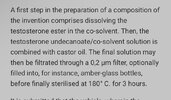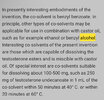We'd all choose real pharma gear if it were easily available at a low price, not because UGLs and home brewing can't make effective gear, but because we all know it's safer, made to a higher standard.
I haven't looked for studies specifically addressing Terminal Sterilization, as it's been a long standard practice for manufacturing injectables.
You'll see in the links a lot of care is taken to keep every ingredient and piece of equipment in the process sterile, starting with raws.
Terminal sterilization is a recognition that even with the highest standards of manufacturing, bacterial contamination can still occur. Because we're bypassing the body's defense with an injection the consequences, short or long term, are much more serious than orals, or even inhalants, sources we're designed to fight off bacteria from.
For terminal sterilization heat sensitive products are exposed to radiation, in their packaging.
Steam autoclaves can sterilize at 121c.
Dry heat sterilization is usually done at 180c.
This is the method specified in Bayer's Testosterone Undecanoate patent.
From this we can extrapolate that BA, BB, Castor Oil, and Test-U can withstand 180c for 3 hours without significant degradation:
View attachment 293900
The present invention relates to pharmaceutical compositions, formulated for injectable administration, which comprises a testosterone ester, in particularly testosterone undecanoate, in a vehicle comprising castor oil and a co-solvent. Upon injecting the compositions according to a particular...
patents.google.com
This is a pharma contract manufacturer, explaining the details of making sterile injectables. Obviously their standards are high, but time is money, and no step would be done if it were useless.
If anything, the much lower standards, and lack of testing in home brewing (and UGL) makes Terminal Sterilization even more useful, compensating for all the sources of contamination instead of relying 100% on a cheap filter from Amazon to do all the heavy lifting of sterilization.
Learn about sterile injectables, how they’re made, and the growing role they play in supporting patient care.

www.vetter-pharma.com
I know some say "I've been injecting for XX years and I'm fine, where's the evidence of bacteria??".
I think it's all around us. The unexplained brutal PIP, inflammation, occasional fevers, sudden joint pain, "Test flu".
It would be more odd to have never encountered contaminated gear given how loose the standards are, it's just that no one ever tests for microbials, including endotoxin, always present wherever there's bacterial and passes right through syringe filters.





